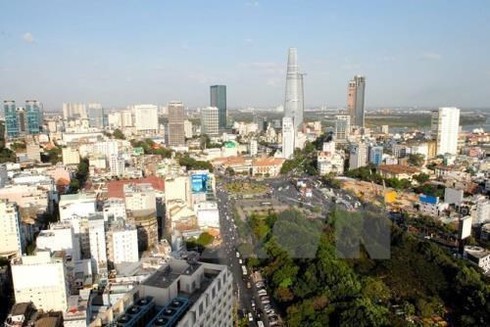 |
At an event to unveil the WB’s Vietnam Development Report 2019, Chairman of the municipal People’s Committee Nguyen Thanh Phong said although the city has taken leading steps in development connectivity, the size of its economy remains modest with 58 billion USD. Therefore, despite a high annual growth rate, the local economy still lags far behind those of big cities in the region.
Noting some causes of this fact, he said HCM City has a low starting point, lax connectivity, and poor infrastructure which has yet to meet standards or be connected with that in the region. Additionally, its participation in domestic and international value chains is still limited while underdeveloped logistics services are unable to meet long-term development demand.
The official said he hopes the WB and experts will work out effective solutions to help HCM City address existing connectivity shortcomings, calling on them to assist the city to develop fast and sustainably in the time ahead.
There remains much room for the local economic growth, so a growth rate of over 8.5 percent is completely possible, Phong noted.
He said with the viewpoint that the more HCM City develops, the more it can contribute to the nation, the municipal administration is proposing central agencies build an international financial centre here as part of the national development strategy for 2021-2030.
Therefore, HCM City hopes that the WB, as the world’s largest financial organisation, will step up connection activities to help the city maintain its stature as an economic locomotive of Vietnam.
At the event, experts shared the view that connectivity is necessary to improve competitiveness amid the increasingly extensive international integration, and it will help comprehensively bolster economic growth and resilience, particularly when HCM City and the neighbouring Mekong Delta region are now under severe impact of climate change and saltwater intrusion.
WB Country Director for Vietnam Ousmane Dione said the fast changes in international trade and domestic consumption models, along with growing disaster risks, will influence the connectivity demand in Vietnam in the future.
Upgrading the connectivity system, not only infrastructure but also transport and logistics services, by appropriate policies and investment will help the country move farther in the promotion of integration, inclusive development and resilience, he added. VNA
 A leader of Ho Chi Minh City on January 17 expressed his hope that the World Bank (WB) will assist Vietnam’s southern economic hub to build an international financial centre." itemprop="description" />
A leader of Ho Chi Minh City on January 17 expressed his hope that the World Bank (WB) will assist Vietnam’s southern economic hub to build an international financial centre." itemprop="description" />